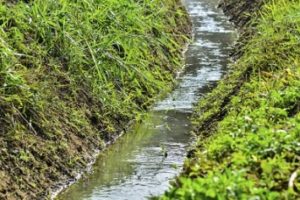The Environmental Working Group (EWG) promptly greeted President Trump’s Executive Order directing the withdrawal or modification of the Clean Water Rule (CWR) with data from a 2009 EPA study the EWG says shows that 117 million Americans draw at least some of their drinking water from intermittent, ephemeral, and other small streams.

“Small streams are where big rivers start, and the best science confirms that dirty streams mean even dirtier rivers,” stated the EWG. “Millions of Americans drink water directly connected to 234,000 miles of small, potentially unprotected streams. Right now, the Clean Water Act protects these streams from pollution. President Trump’s Executive Order immediately threatens drinking water for millions of Americans.”
EPA’s study had already been discredited by Senator James Inhofe (R-OK) while he was serving as chair of the Senate Committee on Environment and Public Works (EPW Committee).
New York and Texas Most Dependent
In the study, the EPA mapped a source protection area (SPA) for every public drinking water system. The Agency defined an SPA as “the area upstream from a drinking water intake that provides water to a public drinking water system used during a 24-hour period.”
“In all, the EPA assessed 413,104 miles of waterways within SPAs,” says the EWG. “The assessment found that 57 percent, or 234,459 stream miles, were intermittent, ephemeral, or headwater streams.”
“In 21 different states, small streams provide drinking water for 1 million or more people,” says the EWG. “More than 5 million people in each New York, Texas, and Pennsylvania get drinking water from small streams as do more than 3 million people in each California, Georgia, Maryland, Ohio, North Carolina, and Arizona.”
The EWG adds that the study shows that more than 72 million people in 1,033 counties get more than half their drinking water from small streams.
Inhofe: Propaganda Only
Based on a fact sheet released by Inhofe’s EPW Committee, EWG’s analysis, as well as the EPA study, are factually weak if not outright deception.
According to the fact sheet, the analysis and the 117 million people-statistic were propaganda developed and used by the EPA to support its Vulnerable Waters project and, later on, the CWR. Inhofe claims the propaganda did not match the analysis.
“EPA’s propaganda claims that 117 million people get their water from ephemeral, intermittent, and headwater streams. But the actual analysis points out that the dataset EPA used to come up with that statistic does not even include ephemeral streams. The dataset also excludes ‘streams less than one mile in length, lakes less than six acres in size, and wetlands less than 24 acres in size,’” states the fact sheet.
“EPA propaganda fails to include this disclaimer in a blatant attempt to confuse Congress and the American public about the debate over dry channels that hold water only when it rains,” according to the fact sheet. “This misleads the public to believe that channels that may hold water only a few days a year or a few days in a decade are sources of drinking water.
The Inhofe fact sheet also notes that the EWP was informed by a Colorado water official that any source of drinking water is already both regulated and given a higher level of protection because it does provide drinking water.
